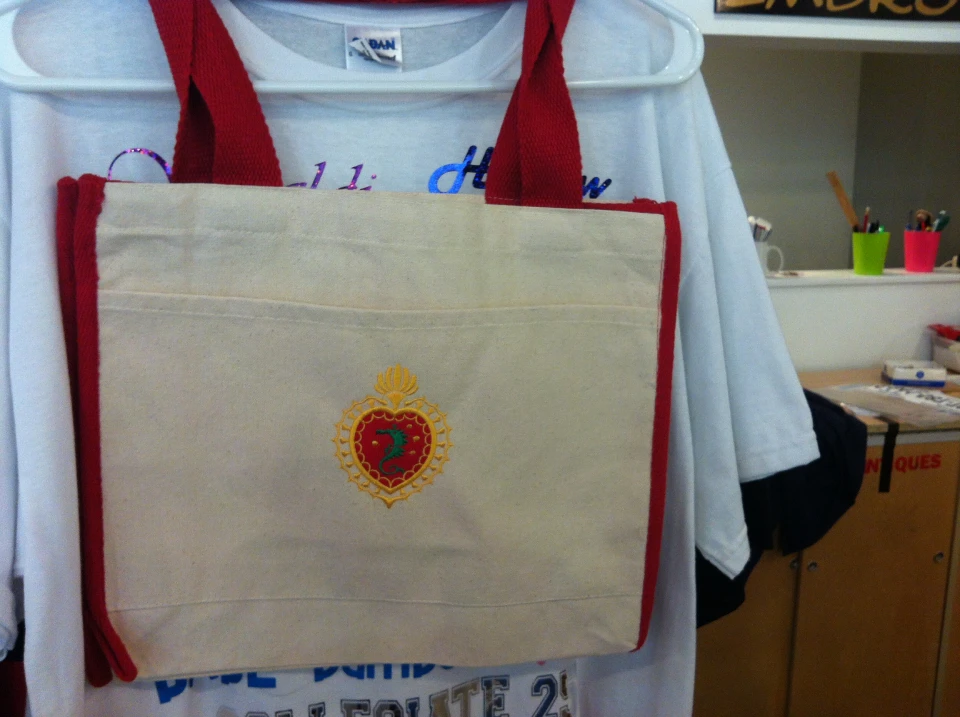The Art of Personalized Embroidery: Opening the Tricks to Creating Distinct and Remarkable Styles
The secrets to developing custom embroidery designs that astound the eye and leave an enduring impact lie in a fragile balance of technique, creativity, and interest to detail. As we dive into the globe of custom needlework, we discover the nuanced interaction in between string option, sew intricacy, and style personalization that elevates a simple garment to a work of art.
Picking the Right Embroidery Threads
When selecting needlework threads, what vital aspects should you think about to make certain the ideal outcomes for your custom layouts? The choice of embroidery string is critical in figuring out the last outcome of your embroidered style.
Thicker strings can add dimension and structure to your design, while finer threads are suitable for detailed information and little message. Furthermore, taking into consideration the color fastness and washability of the thread is essential to ensure that your custom layouts keep their top quality and vibrancy over time.
Exploring Different Stitch Techniques
To dig right into the realm of 'Exploring Different Stitch Strategies', one must grasp the details and subtleties that each sewing technique brings to the art of embroidery. Different stitch techniques not just include aesthetic interest however additionally add to the total structure and measurement of the design. One popular stitch technique is the satin stitch, which includes closely stuffed parallel stitches to develop a smooth and shiny surface, ideal for filling out forms and developing vibrant lays out.
On the various other hand, the backstitch is a versatile technique often used for describing and adding great details. It involves stitching backward to develop a solid line of embroidery. In addition, the French knot stitch includes a responsive element to layouts, perfect for creating textured accents like flower centers or attractive touches.
Checking out various stitch methods permits embroiderers to play with light, shadow, and deepness within their designs, boosting the aesthetic charm and imaginative top quality of their needlework projects. By understanding different sewing techniques, one can open endless possibilities for developing distinct and remarkable personalized needlework items.
Incorporating Personalized Layout Aspects
Having actually discovered the intricacies of different stitch techniques such as the satin stitch, backstitch, and French knot, the focus now shifts in the direction of including tailored layout aspects in custom needlework tasks. Personalized style aspects play an essential duty in making needlework jobs genuinely special and unforgettable. One method to integrate customization find out here now is by including initials, names, or substantial days to the layout. This not only includes a customized touch yet additionally enhances the emotional value of the embroidery item.
One more way to integrate customized layout aspects is by consisting of symbols or themes that hold unique meaning to the recipient or show their rate of interests and personality. For instance, including a preferred blossom, pet, or hobby-related icon can make the needlework design much more meaningful and personalized. In addition, choosing colors that resonate with the recipient or line up with the desired theme can further improve the customization of the needlework job.
Grasping the Art of Color Coordination

One key facet of color control is recognizing color concept. This consists of knowing how various colors connect with each various other, the feelings they share, and exactly how they can be integrated to create aesthetically enticing designs. By applying shade concept concepts, embroiderers can develop harmonious color schemes that improve the overall appearance of the style.
Additionally, focusing on comparison is important in shade coordination. Using contrasting colors can help specific components of the design pop, improve clarity, and create a visually dynamic needlework piece. By grasping the art click for more of color sychronisation, embroiderers can boost their layouts and develop unforgettable pieces that resonate with customers and visitors alike.
Enhancing Texture With Advanced Embroidery Stitches
French knots, as an example, are perfect for adding small, increased dots to your layout, mimicking the appearance of grains or creating a textured surface. Bullion knots, on the other hand, can be used to create twisted, ropelike official source aspects that include an extravagant feel to the embroidery. Seed sewing includes tiny, scattered stitches that can fill out locations with a multicolor structure, while turkey work produces fluffy, dimensional accents reminiscent of animal hair or foliage. Explore these advanced embroidery stitches permits you to press the boundaries of conventional needlework and develop genuinely unique and aesthetically appealing structures in your designs.
Final Thought
To conclude, the art of custom-made embroidery entails a combination of choosing the right threads, exploring various stitch methods, integrating individualized design aspects, understanding color coordination, and enhancing texture with innovative stitches. By understanding and carrying out these key elements, embroiderers can produce unique and unforgettable styles that showcase their creativity and skill. Embroidery fanatics can open the keys to developing lovely and custom items that attract attention and leave a long lasting impression.